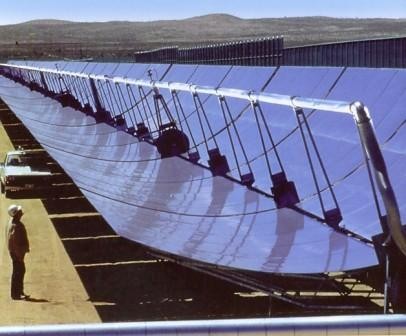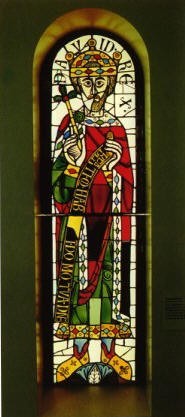This part of our web site illustrates the many applications that Glass has in our Society. To satisfy the curiosity of those interested in learning more about the material and the industries based on it, there is a further information section at the end, giving useful web links. We hope this will extend over time.
The term ‘glass’ refers to a state of matter, usually produced when a viscous molten material is cooled rapidly to below its glass transition temperature, with insufficient time for a regular crystal lattice to form. Consequently a key feature is that glasses have structures that are liquid-like i.e. not crystalline; this means that they lack the internal structural boundaries present in most other materials. So they are typically transparent to light, although this can also depend on their composition. As a result they are enormously valuable for windows, containers, ovenware, tableware, lighting, and optical fibres for telecommunications (underpinning the internet and mobile phones).
The picture shows Bent Flat Glass in Modern Architecture, Museum of History, Berlin (Architect I.M. Pei)
The most familiar chemical forms of glass are the silica-based materials used for architectural and automotive glazings, containers, table glassware, glass wool for heat insulation and decorative objects. These compositions have a high viscosity in the molten state which:
- Aids glass formation, as the constituent ions can only re-arrange themselves with difficulty,
- And makes possible fabrication into a multitude of shapes as the melt is cooled.
Such materials allow the aerodynamic design of car windshields whilst giving the driver an undistorted image. The windows are variously laminated or toughened to protect the occupants in the event of a crash, and can be coated or even coloured to control heat gain, to prevent UV damaging the seals and for special effects including augmented reality such as navigational aids.
An area in which glasses are playing a vital role is in reducing the world’s carbon footprint. For example this picture shows the parabolic glass mirrors (silver coated) of a solar thermal power plant in the Mojave Desert, California capable of generating 350 MW.
But glasses can be made from many different compositions using a wide variety of processes to give products with an even wider range of properties and applications than found for silica based systems. These are less familiar but form the basis for a wide range of speciality glasses such as optical materials, laboratory glass, cooktop panels, display screens, glass fibers for reinforcement of plastics, amplifiers, multiplexers and switches for optical fibre telecommunication systems.
A wide range of additional glass applications result from glasses that have been treated to give them added value (functional glasses). Such glasses typically possess surface properties different from the bulk ones due to chemical or thermal treatment, coatings or surface structuring. The Romans for example were able to produce beautiful artistic effects using technically challenging surface modification. The picture shows the structuring of a glass surface using a cutting wheel to produce a Roman Diatreta Cup (1st Century AD).
These days techniques such as laser structuring are able to modify a glass surface on an amazingly fine scale. This picture, for example, shows a planar diffractive microlens with a diameter of just 0.6 mm .
Glasses will dissolve a wide variety of different materials such as the oxides of chromium, cobalt, copper, iron, manganese and nickel to produce a rainbow of colours. Each element of the coloured components in this Medieval Stained Glass Window (11th Century, Augsburg, Germany) consists of an individually produced coloured glass sheet cut to the required shape any held in place by lead cames. In this window enamelling with black stain was used to add fine detail.
Later people learned how to use silver stains to produce local areas on clear sheets that were coloured yellow or orange. This same basic technology of ion exchange is now used to strengthen fine objects such as wine glasses and to produce thin channels in the surface of glass sheets that can guide light, just as optical fibres do.
To find out more about the artistic aspects of stained glass have a look at the following web site, which also contains numerous additional links: http://www.affordablelamps.com/stained-glass-fixtures-learn-more.html
Further Information
Have you ever thought what would the world be like without glass? From buildings to appliances, from furniture to electronic devices, flat glass is omnipresent in our daily life. Windows, cars, mobile phones and tablets, photovoltaic panels…
https://www.youtube.com/watch?v=w-3xiRSksdQ . Fun glass by FunGlass (based at Trencin University).
Find out more about the activities of British Glass in the UK. Their site lists a wide range of ‘Glass’ organisations.
https://www.youtube.com/watch?v=WenfMnQRBME
Corning report an antimicrobial version of their Gorilla Glass.
For the latest on TV in a contact lens click here.
For new researchers from academia or industry our annual Summer School may be of interest (2nd-7th July 2018). Go to the link Montpellier summer school for the programme and ICG News for a more personal account of the 2017 school. 2018 will again see two streams in parallel one devoted to Glass Science and the other to Biomaterials. We are also currently planning our fourth winter school in Wuhan, China (4-9th November 2018).
The book of abstracts for the GPD Finland event (2017) is now available for download.
Web based teaching material is available at: http://www.lehigh.edu/imi/WebCourse_Atomistic_Modeling_of_Glass.html
http://www.lehigh.edu/imi/GlassStructureCourse.htm
http://www.lehigh.edu/imi/teched/library.html
http://www.lehigh.edu/imi/scied/libraryglassedu.html
You can find more on the Center for Glass Research, Technology and Education in Vitreous Materials in São Paulo, Brazil on their recently created web site.
Edgar Zanotto and John Mauro have just published a new article entitled “Two Centuries of Glass Research: Historical Trends, Current Status, and Grand Challenges for the Future”. It is available at the following link: http://onlinelibrary.wiley.com/doi/10.1111/ijag.12087/abstract. It is the “global” follow-up to their previous article on “Glass Science in the United States.”
The following site concerns Glass Art museums in the USA: http://university-museums-and-collections.net/minneapolis/weisman-art-museum
For a number of interesting sites on stained glass and its history click here.
A number of web sites associated with art glass production in the 400 year old glass making centre around Stourbridge, UK are listed at: www.heartofenglandglass.co.uk
Go to: http://www.stravagante-jewelry.com/murano-glass-jewelry-beads-history.html for interesting article on Glass Beads.
The Friends of Glass Web site offers further information about glass and recycling.
The bi-annual newsletters from the Glass and Facade Technology Research Group in Cambridge can be downloaded from their website www.gft.eu.com. They have recently added their latest message (16/02/2016): http://www.gft.eng.cam.ac.uk/our_publications/newsletter
Coatings are an important way of enhancing the properties of glass. More information about coating technologies in general can be found at: www.european-coatings.com
AIGMF recently launched a Newsletter on the web.
The Glass Manufacturing Industry Council (GMIC) and The American Ceramic Society (ACerS) has recently annouced the publication of their Glass Melting Furnaces DVD taught by Instructor C. Philip Ross. To order ring ACerS customer services in the US on 1-866-721-3322 or 240-646-7054
The American Ceramic Society have recently issued a set of 2 DVDs on Understanding Why Ceramics Fail and Designing for Safety created by Steve Freiman.
See the IGS web site for some innovative developments in Architecture.
For museum events in Venice look at this web site: https://lestanzedelvetro.org/en/about/






